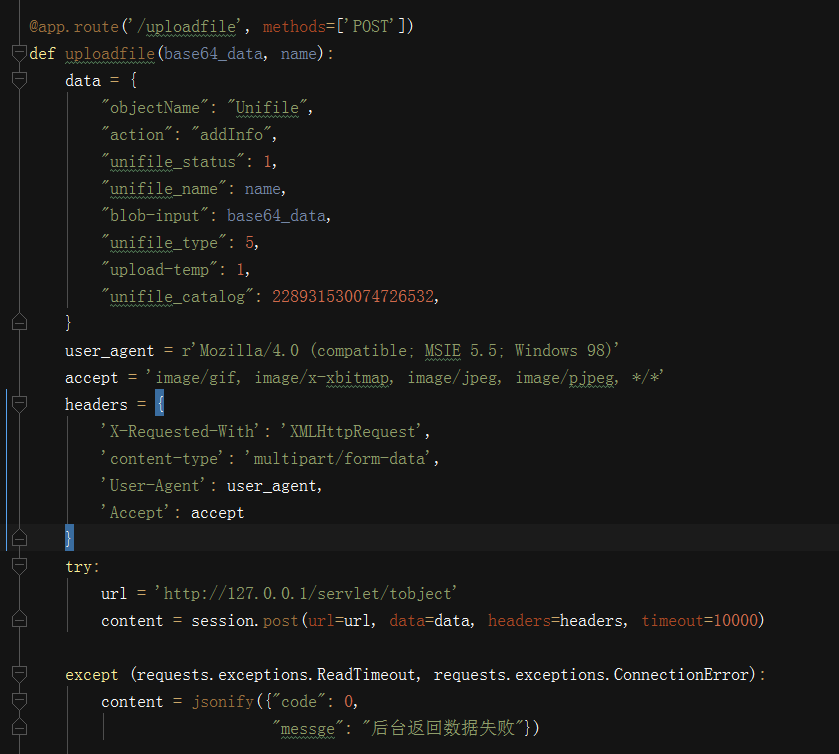

- PYTHON CONVERT TO BASE64 ENCODING HOW TO
- PYTHON CONVERT TO BASE64 ENCODING CODE
- PYTHON CONVERT TO BASE64 ENCODING WINDOWS
import base64 with open ('/Users/Bob/test.txt') as f: encoded base64.b64encode (f.readlines ()) print (encoded) I've based it on the base64 documentation. String can be encoded as follows: echo 'Hello world. Python: Converting file to base64 encoding. The base64 command can be used to perform Base64 encoding and decoding.
PYTHON CONVERT TO BASE64 ENCODING HOW TO
This tutorial shows how to perform Base64 encoding and decoding in Linux. “Base64 Decode strict” decodes a single Base64 string but will throw an error message if an unexpected character is detected, such as “&”. Base64 is an encoding and decoding scheme that often used to convert binary data to an printable ASCII text format, and vice versa. “Base64 Decode” decodes a single Base64 encoded string but may show corrupted output if there are unexpected characters.
PYTHON CONVERT TO BASE64 ENCODING CODE
“Base64 Encode by line” encodes each separate line of data into a separate Base64 string. Now, We have to convert Hexadecimal number into base 64 using Python, Let’s see the below code import codecs hex'000001DEDA4111F0' your Hexadecimal Number b64codecs.encode (code (hex,'hex'),'base64'). This can be helpful if a Unix Based command-line decoder is failing to decode the data.
PYTHON CONVERT TO BASE64 ENCODING WINDOWS
“Base64 Encode with Unix EOL” specifically uses an “End Of Line” (EOL) character used by Unix systems, rather than the default Windows EOL. “Base64 Encode with padding” encodes all selected data but includes the padding where it’s needed. This could cause compatibility issues with some Base64 decoders. “Base64 Encode” encodes all of the selected data into one Base64 string but omits the padding character even if it’s needed. Ensure you highlight the data to be processed before clicking “Plugins”, then MIME Tools”, and selecting a process. import base64 string 'Codespeedy is fun.' stringbytes string.encode('ascii') b64bytes base64. Have a look at the Python program given below. In short, Base64 converts a binary representation (an image file) into an ASCII string that is safe for plain text systems. Tip: The encoders only work on selected data, make sure you highlight all the data you want encoded first. Base64 Encoding and Decoding in Python Python provides us with a module named ‘base64’ to encode and decode strings. To convert an image into a JSON-friendly format, we can use Base64 encoding.

In the second level of the menu you can see all of the Base64 encode and decode options. Next, click on “Plugins” in the top bar, then “MIME Tools”. To encode or decode Base64 data you need to first highlight the entire range of data you want to be encoded or decoded. altchars is a byte-like object and must have a minimum length of 2. altchars specifies alternative characters for encoded + or / characters. s contains a byte-like object that is to be encoded. I'd also love to know how to get the correct (correct for my case anyway) hash out of Python.How to Base64 encode and decode in Notepad++ The base64.b64encode () function takes s as a non-optional parameter and altchars as an optional parameter. I'd like to understand why I'm getting two different hash values and what the difference between those two is.


A Go implementation that calculates it correctly is here: īash base64 and Python however calculate the hash as YjNjYmZiYzEyZDU0MzI0NzM0OWIyY2FkMTg4NWRlNWY2MzE2ODdkYTIzYTYyZTFhMmIwNDcwNmNlYzA1NGI5NQ=, I can also get Go to calculate the same hash, though I don't know why: Microsoft calculates the base64 value of the hash (in my example, hash= b3cbfbc12d543247349b2cad1885de5f631687da23a62e1a2b04706cec054b95) as s8v7wS1UMkc0myytGIXeX2MWh9ojpi4aKwRwbOwFS5U=. The part I can't get past is where the base64 calculation comes in. import base64 string 'hello world' strbytes string.encode('ascii') strbase64 base64. Then we can go ahead and convert the string to a bytes object be finally encoding it. Otherwise, if you have a Base64 string, paste it into the Base64 field and press Decode Base64 to text the result will appear in the Text field. The sha256(utf16le(username)) part is easy, it's basically the python NTLM function, but using sha256 instead of MD5. Encoding base64 Strings Before we can base64 encode a string in python we must import the base64 module. If you need to encode a text to Base64, fill in the Text field and press Encode text to Base64 the result will appear in the Base64 field. I'm trying to create a python function to calculate base64(sha256(utf16le(username))) as implemented by Microsoft in some RDP logs. I know what I want to get to, but not really how to even ask how to get there. I apologize for not really knowing what I'm asking for.


 0 kommentar(er)
0 kommentar(er)
